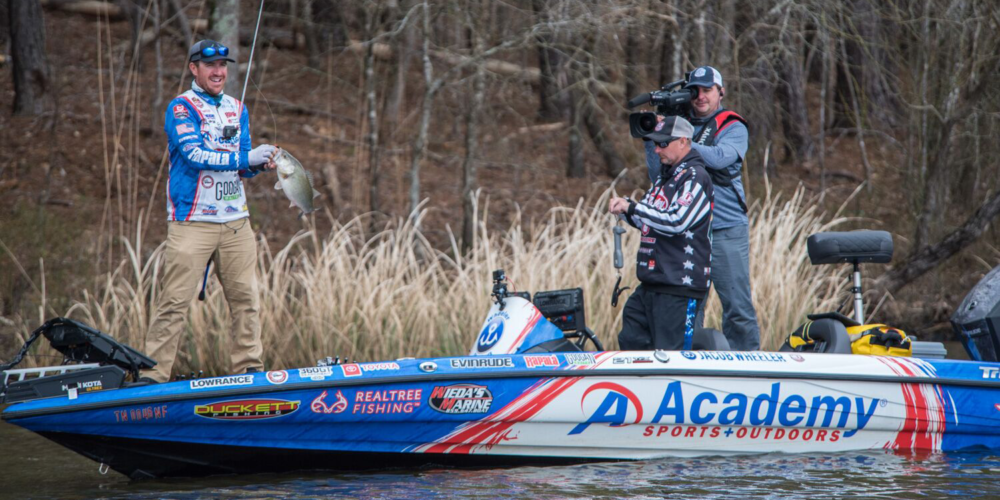Follow Wheeler’s Keys for Better Wintertime Bass Success

In the midst of holiday giveaways on his social media pages, MLF pro Jacob Wheeler was able to find some time to fish this week. While he was at work on Lake Chickamauga, Wheeler thought of a few tips to pass on to his fellow anglers this winter.
“Normally, you’re just not going to get a lot of bites,” Wheeler said simply. “Water temperature is obviously a big deciding factor in that. In my mind, winter fishing is all about one thing: bait. There’s a lot of factors that go into that like water clarity, depth and temperature, but if you follow the bait you should be good.”
How Deep Are We Talking?
The first thing Wheeler tries to target when he’s searching for winter bass is depth. The Tennessee pro warns that depth is always relative: in some lakes “deep” is considered 15 feet or less while on other lakes “deep” may mean around 30 feet. But no matter where you are, the Rapala pro says that if you can find some depth off of a flat, that’s a great place to start.
“Depth houses the bait in the winter,” Wheeler said. “When it gets really cold, the bait is not going to want to live up on top of a flat. That depth provides a little safety zone for those baitfish. That’s why the bass spend so much time in that depth in the winter.”
Keep an Eye Out for Key Structure
Wheeler isn’t just keeping tabs on his depth, he’s also on the lookout for structure.
“The second thing I look for is hard transitions,” Wheeler said. “I’m looking for pushouts, channel bends or bluff bends. Really, anything that transitions from shallow to deep. Those areas are great for bass to set up because they can be closer to that depth of water and, like I said, that depth is important.”
The Indiana native also stays locked in on his graphs to look for any large rocks located on the bottom of the lake.
“You hear the old adage about how rocks warm up faster, but to me, it’s not about that. I feel like the bass like to ambush the crawfish that live around those rocks. The deeper water and the food source there make those rocks great structure for the bass to hang around.”
Winter Means Jerkbait
With all of these tips in mind, Wheeler says there’s really one bait that sticks out to him that as a must-have this time of year.
“In my mind, a jerkbait is one of the best baits to use in the winter,” Wheeler said. “I can catch them on that jerkbait as deep as 15 to 20 feet. The main thing I key on with that bait is depth of water. I may be casting into a spot that is only 3 to 5-feet deep, but my boat will be located right near some deeper water.”
Wheeler prefers a Rapala Shadow Rap Deep jerkbait with 12-pound Suffix Adance fluorocarbon spooled on a Duckett Paradigm 7.3:1 reel and a 6-foot-10 medium Duckett jerkbait rod. While the tackle is important, Wheeler claims that the technique you use is just as crucial.
“The cadence that you work that jerkbait can make all of the difference,” Wheeler said. “Normal rule of thumb that I have: the colder the water, the slower you move your jerkbait. I like to go with a jerk-jerk-jerk-pause-jerk-jerk cadence. That pause in the middle is about 4 to 5 seconds and I will wait about 3 seconds before I begin the cadence again once I finish it.”
Instead of picking out precise colors for his jerkbait, Wheeler likes to go with three different types of colors.
“A painted white color to mimic shad, a translucent color, and then a flashy color,” Wheeler listed. “On a day where the water is clear, I’ll be throwing that translucent color. On a windy and cloudy day, I’m going to throw that white or pearl color. A sunny day with a lot of wind, that’s when I turn to a jerkbait color with a little more flash to it.”